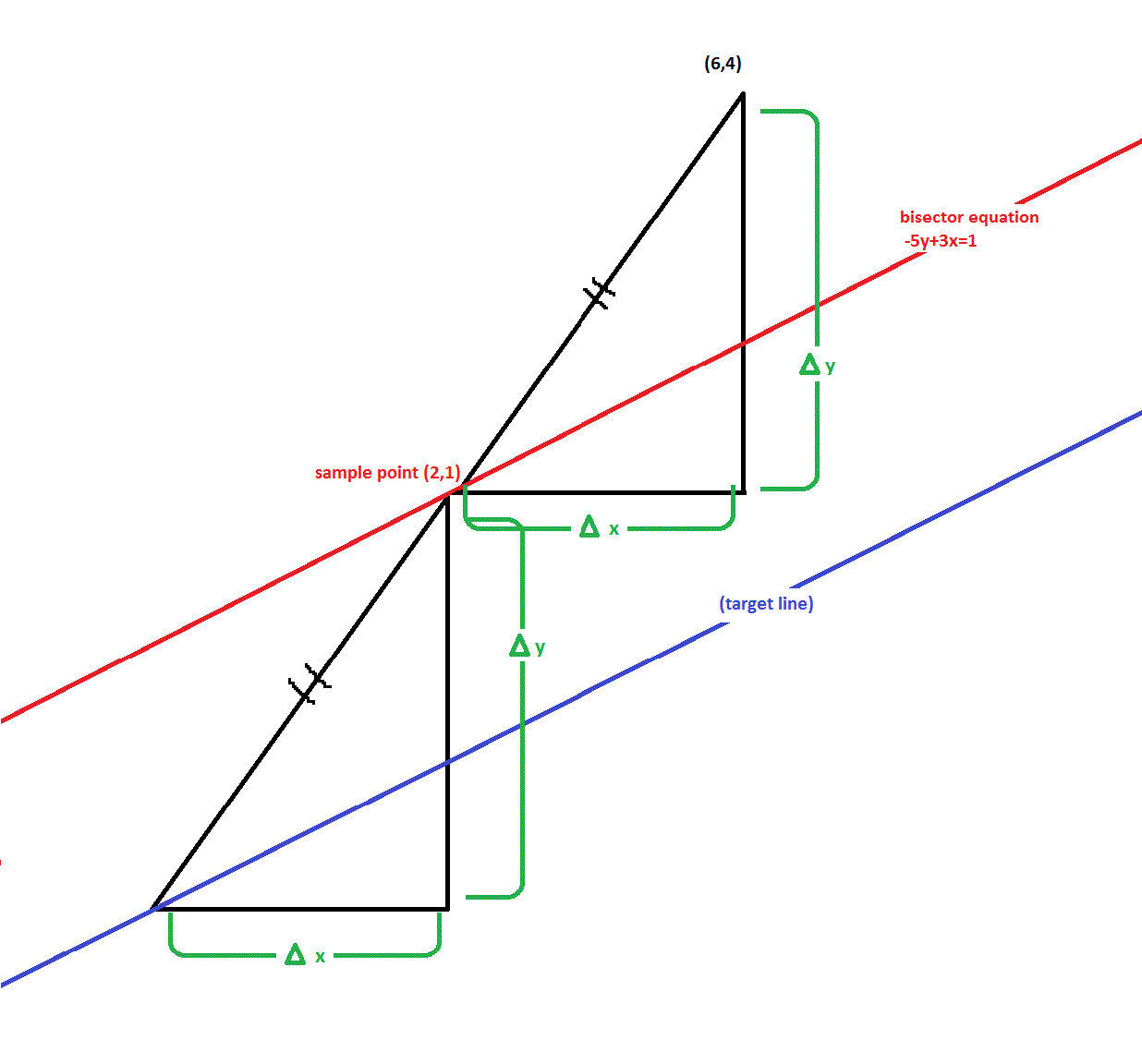A line segment is bisected by a line with the equation # - 5 y + 3 x = 1 #. If one end of the line segment is at #(6 ,4 )#, where is the other end?
1 Answer
Explanation:

If
if
Then for any point
the
will be the same as
Since
for any point
the corresponding target end point will be
Specifically we can see that
with a corresponding target point of
Note also that the target line is parallel to
and therefore has the same slope (namely
Using the slope-point form for the target line, we get
or
or
